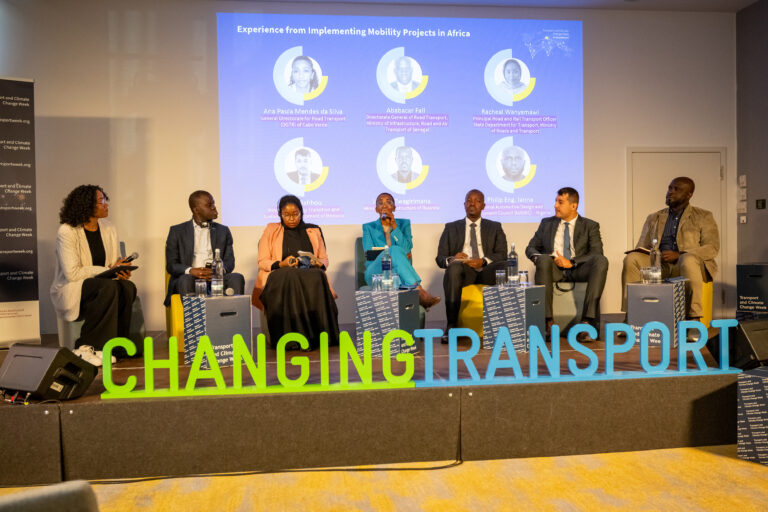Kazakhstan to Ensure Nationwide Internet Access by 2027 – The Astana Times
Report on Kazakhstan’s Digitalization Strategy and Alignment with Sustainable Development Goals
Kazakhstan has outlined a comprehensive strategy to achieve universal high-speed internet access by 2027, a cornerstone of its national modernization effort. This initiative is fundamentally aligned with several United Nations Sustainable Development Goals (SDGs), particularly those concerning infrastructure, innovation, economic growth, and reduced inequalities.
Digital Infrastructure Development and SDG 9
The nation’s plan to expand its digital infrastructure directly supports SDG 9: Industry, Innovation, and Infrastructure, which calls for building resilient infrastructure and fostering innovation. The government has identified information and telecommunication projects as fundamental to achieving its objectives.
Investment and Strategic Goals
Significant capital has been allocated to modernize the telecommunications sector, with the following key metrics reported:
- Investment to Date: Over 1 trillion tenge (USD$2.1 billion) invested in the telecom sector over the past three years.
- Current Internet Speed: The national average has reached 94 Mbps.
- National Project Targets: The primary goals are to achieve 100% internet coverage with speeds exceeding 100 Mbps.
Rural Connectivity and SDG 10
A major focus of the strategy is to bridge the urban-rural digital divide, a critical step toward SDG 10: Reduced Inequalities. By ensuring equitable access to digital resources, the plan also promotes SDG 4: Quality Education, enabling remote learning and access to information for all citizens.
- Fiber-Optic Network Expansion: Optical fiber lines are planned to reach 90% of rural settlements, with an additional 3,000 villages to be connected by 2026 through an investment of 323 billion tenge (USD$670 million).
- Satellite Internet Solutions: The remaining 10% of smaller, remote settlements will be provided with internet access via satellite technology.
Mobile Network Expansion and Economic Impact
The parallel expansion of mobile networks is designed to support SDG 8: Decent Work and Economic Growth and SDG 11: Sustainable Cities and Communities. Reliable connectivity is recognized as a basic necessity for both citizens and the modern economy.
4G and 5G Rollout Targets
The government has set ambitious targets for mobile coverage to be achieved by 2027:
- 4G Coverage: To be extended to 92% of all settlements.
- Highway Connectivity: 40,000 kilometers of highways will gain full 4G access.
- 5G Network Deployment: 5G networks will be rolled out across 20 major cities, covering up to 75% of their territories.
Cybersecurity and Institutional Strengthening (SDG 16)
To ensure the security and integrity of the expanding digital ecosystem, the government is implementing measures that align with SDG 16: Peace, Justice, and Strong Institutions. These actions aim to build effective, accountable, and transparent digital governance.
Combating Fraud and Protecting Data
New regulations and stricter enforcement are being introduced to protect citizens from digital threats.
- Anti-Fraud Systems: Biometric identification for subscribers is now mandatory, and telecom operators must coordinate anti-fraud systems with the National Bank. These measures have already resulted in blocking over 30 million suspicious calls since the start of 2024.
- Data Leak Penalties: There is a call for stricter penalties for personal data leaks, with accountability extending beyond government agencies to include banks, telecom operators, and private businesses to treat such breaches as serious violations.
Analysis of Sustainable Development Goals in the Article
1. Which SDGs are addressed or connected to the issues highlighted in the article?
-
SDG 9: Industry, Innovation and Infrastructure
This is the most prominent SDG in the article. The entire focus is on building and upgrading digital infrastructure, which is a key component of modern infrastructure. The plan to provide universal high-speed internet, extend fiber-optic networks, and roll out 4G and 5G technology directly relates to fostering innovation and building resilient infrastructure.
-
SDG 8: Decent Work and Economic Growth
The article connects digital infrastructure to economic progress. Prime Minister Olzhas Bektenov is quoted stating that “digital infrastructure forms the backbone of the country’s modernization efforts” and that a stable internet connection is a “basic need of… the economy.” This implies that enhancing digital connectivity is a strategy to boost economic productivity and growth.
-
SDG 11: Sustainable Cities and Communities
The article discusses specific plans for urban and rural areas. The goal to roll out “5G networks… across 20 major cities” and extend “optical fiber lines… to 90% of rural settlements” aims to make both cities and rural communities more connected and inclusive, reducing the digital divide and improving access to services.
-
SDG 16: Peace, Justice and Strong Institutions
The section on “Combating fraud and data leaks” directly addresses this goal. By implementing measures like biometric identification, coordinating anti-fraud systems with the National Bank, and calling for stricter penalties for data leaks, Kazakhstan is working to build more effective and accountable institutions that can protect citizens from crime and secure their personal data.
2. What specific targets under those SDGs can be identified based on the article’s content?
-
Under SDG 9:
- Target 9.1: Develop quality, reliable, sustainable and resilient infrastructure, including regional and transborder infrastructure, to support economic development and human well-being, with a focus on affordable and equitable access for all. The article’s main goal to “provide all its population with high-speed internet by 2027” and ensure “reliable connectivity everywhere — from remote villages to highways” directly supports this target.
- Target 9.c: Significantly increase access to information and communications technology and strive to provide universal and affordable access to the Internet. The national project’s aim to “achieve 100% internet coverage” is a clear reflection of this target.
-
Under SDG 8:
- Target 8.2: Achieve higher levels of economic productivity through diversification, technological upgrading and innovation. The article implies this target by framing the digital infrastructure projects as “fundamental” to the country’s “modernization efforts” and a “basic need of… the economy.”
-
Under SDG 16:
- Target 16.6: Develop effective, accountable and transparent institutions at all levels. The implementation of “coordination between anti-fraud systems of telecom operators and the National Bank” is an example of developing more effective institutional mechanisms to combat crime.
- Target 16.4: By 2030, significantly reduce illicit financial and arms flows, strengthen the recovery and return of stolen assets and combat all forms of organized crime. While not fully addressed, the effort to block “suspicious calls” and combat digital fraud contributes to fighting a modern form of organized crime.
3. Are there any indicators mentioned or implied in the article that can be used to measure progress towards the identified targets?
-
For SDG 9 Targets:
- Proportion of population with internet access: The goal is to reach “100% internet coverage” by 2027.
- Internet speed: The aim is to achieve “speeds exceeding 100 Mbps.”
- Proportion of rural population with internet access: The plan is for “Optical fiber lines to reach 90% of rural settlements,” with the remaining 10% connected via satellite.
- Proportion of population covered by a mobile network, by technology: The article specifies goals of “4G technology reaching 92% of settlements” and “5G networks rolled out across 20 major cities, covering up to 75% of their territories.”
- Road network coverage: A specific goal is for “40,000 kilometers of highways” to have “full 4G access by 2027.”
- Investment in infrastructure: The article mentions “over 1 trillion tenge (USD$2.1 billion) has been invested in the telecom sector over the past three years” and a further “323 billion tenge (USD$670 million)” will be invested to connect villages.
-
For SDG 16 Targets:
- Effectiveness of anti-fraud measures: The article provides a direct metric: “since early 2024, these steps have blocked over 30 million suspicious calls.”
- Legal framework for data protection: The call for “stricter penalties for personal data leaks” implies that the creation and enforcement of such laws can be used as an indicator of progress.
4. Summary Table of SDGs, Targets, and Indicators
| SDGs | Targets | Indicators |
|---|---|---|
| SDG 9: Industry, Innovation and Infrastructure |
|
|
| SDG 8: Decent Work and Economic Growth |
|
|
| SDG 11: Sustainable Cities and Communities |
|
|
| SDG 16: Peace, Justice and Strong Institutions |
|
|
Source: astanatimes.com
What is Your Reaction?
 Like
0
Like
0
 Dislike
0
Dislike
0
 Love
0
Love
0
 Funny
0
Funny
0
 Angry
0
Angry
0
 Sad
0
Sad
0
 Wow
0
Wow
0















































/environment-climate-change-and-health-(ech)/water-sanitation-hygiene-and-health-(wsh)/landfill-tuvalu-36092.tmb-1200v.jpg?sfvrsn=5c21fe40_1#)


.jpg.webp?itok=0ZsAnae9#)


























